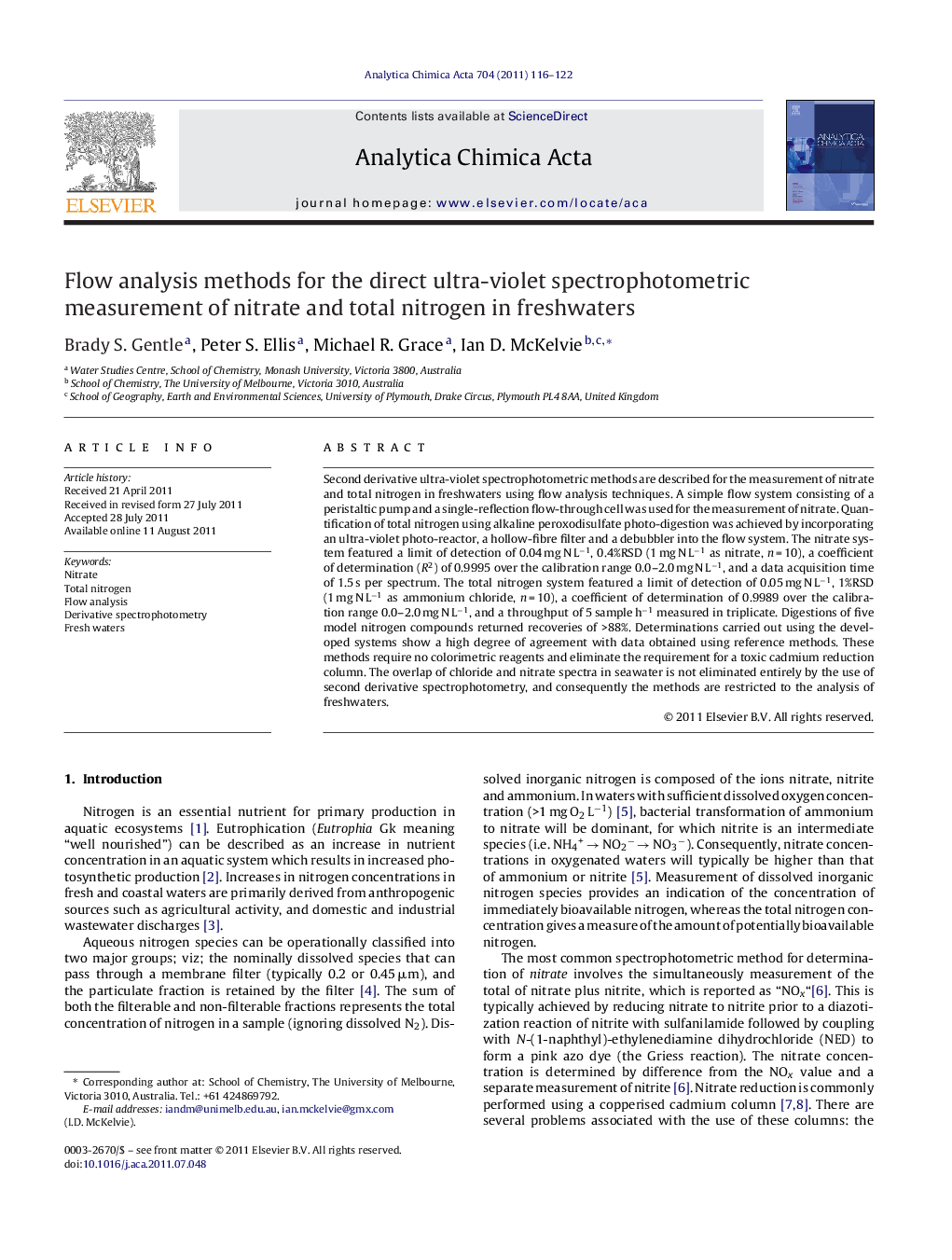| Article ID | Journal | Published Year | Pages | File Type |
|---|---|---|---|---|
| 1165947 | Analytica Chimica Acta | 2011 | 7 Pages |
Second derivative ultra-violet spectrophotometric methods are described for the measurement of nitrate and total nitrogen in freshwaters using flow analysis techniques. A simple flow system consisting of a peristaltic pump and a single-reflection flow-through cell was used for the measurement of nitrate. Quantification of total nitrogen using alkaline peroxodisulfate photo-digestion was achieved by incorporating an ultra-violet photo-reactor, a hollow-fibre filter and a debubbler into the flow system. The nitrate system featured a limit of detection of 0.04 mg N L−1, 0.4%RSD (1 mg N L−1 as nitrate, n = 10), a coefficient of determination (R2) of 0.9995 over the calibration range 0.0–2.0 mg N L−1, and a data acquisition time of 1.5 s per spectrum. The total nitrogen system featured a limit of detection of 0.05 mg N L−1, 1%RSD (1 mg N L−1 as ammonium chloride, n = 10), a coefficient of determination of 0.9989 over the calibration range 0.0–2.0 mg N L−1, and a throughput of 5 sample h−1 measured in triplicate. Digestions of five model nitrogen compounds returned recoveries of >88%. Determinations carried out using the developed systems show a high degree of agreement with data obtained using reference methods. These methods require no colorimetric reagents and eliminate the requirement for a toxic cadmium reduction column. The overlap of chloride and nitrate spectra in seawater is not eliminated entirely by the use of second derivative spectrophotometry, and consequently the methods are restricted to the analysis of freshwaters.
Graphical abstractFigure optionsDownload full-size imageDownload as PowerPoint slideHighlights► Second derivative UV spectrophotometry has been used to determine nitrate and total N using flow analysis techniques. ► A simple flow system with a single-reflection flow-through cell was used for the UV measurement of nitrate. ► Total N was determined after on-line UV photooxidation with alkaline peroxodisulfate. ► Analyses carried out using the developed flow systems show a high degree of agreement with comparative analyses. ► This method requires no colorimetric reagents and eliminates the requirement for a toxic cadmium reduction column.
